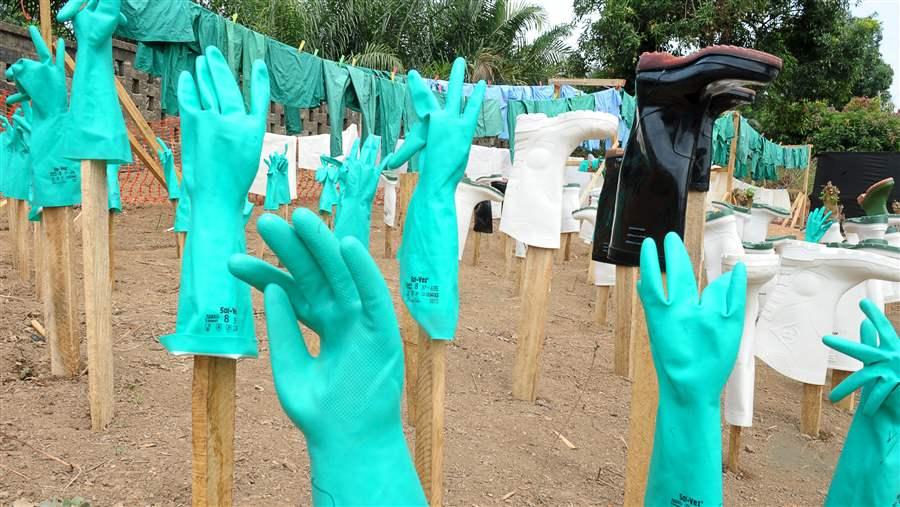Pew Scholar Leads the Search for Ebola Solutions
As the Ebola case count approaches 10,000 worldwide, 1991 Pew scholar Ian Lipkin is devising approaches to stop the virus’ spread.
Lipkin, who directs the Center for Infection and Immunity at Columbia University’s Mailman School of Public Health, leads a design challenge to develop low-cost, technology-driven solutions to Ebola. Beginning Oct. 2, all Columbia students and faculty—past and present—were invited to create prototypes for Ebola-stopping technology costing less than $150.
Entries included a bleach foam that could sanitize large surface areas, a specialized containment suit, a decontamination chamber for electronics, and a text message-based communication system to help coordinate surveillance, among other innovations.
 © Getty Images
© Getty Images
“I’m optimistic that at least one, and probably more, of these solutions will make its way into the armamentarium and will help in addressing the challenge of Ebola in Africa and elsewhere,” Lipkin said in The New Yorker, which deemed him “one of the world’s leading infectious disease investigators.”
Lipkin is chiefly recognized for his work on coronaviruses, including the one that causes Middle East Respiratory Syndrome (MERS). He recently advocated in The Wall Street Journal for greater support of scientific research to address such contagions.
“We may not be able to directly address the drivers of infectious disease, but we can invest in surveillance in the developing world,” he said. “We also can improve diagnostics and pursue new strategies for rapidly developing and manufacturing drugs and vaccines.”
Learn more about Pew’s biomedical programs.











